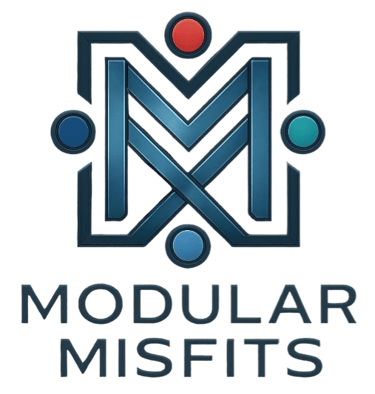Enhancing Army Operations with AI-Driven Data Integration and Observability Solutions
Modular Misfits specializes in secure AI/ML integration and data observability for the U.S. Army. Our solutions ensure interoperability and align with the Army’s unified data reference architecture, enabling real-time, mission-critical decision-making in contested environments. Discover how we eliminate vendor lock-in and enhance operational efficiency.
5/8/20243 min read


Executive Summary
The U.S. Army has outlined a clear shift toward a data-centric operational model to support Multi-Domain Operations (MDO), Joint All-Domain Command and Control (JADC2), and data-driven decision-making in disconnected, intermittent, and limited (DIL) environments. The Army’s Unified Data Reference Architecture (UDRA) and Army Data Plan both call for federated data fabrics, zero trust security, and real-time observability across edge and enterprise networks. Modular Misfits directly addresses these operational gaps through modular, AI-native integration frameworks that ensure mission-critical data can be accessed, trusted, and acted upon under any condition.
Background and Problem Statement
The Army’s push toward a data-centric force, articulated in the Army Data Strategy, UDRA v1.0, and Army Campaign Plan, highlights key pain points:
Siloed data environments leading to delayed decision cycles.
Lack of standard observability mechanisms for AI/ML models in the field.
Inability to securely integrate data across domains in DIL conditions.
Vendor lock-in and rigid integration architectures slowing modernization.
The Army has made it clear: achieving strategic advantage depends on integrating data from tactical sensors, ISR feeds, and operational systems into decision support tools, without moving data or relying on fixed infrastructure. The Unified Network Operations (UNO) initiatives and programs like Command Post Next and C2 on the Move all depend on timely, observable, and secure data integration.
Modular Misfits' Solution Architecture
Our solution consists of three core components, delivered as modular capabilities aligned with UDRA and MOSA principles:
1. Federated Data Mesh Layer
Purpose: Connects distributed data sources without duplicating or relocating data.
Technology Stack: Apache Kafka, Aerospike XDR, Kong API Gateway, GraphQL, and Apache Atlas.
Operational Benefit: Allows tactical and enterprise systems to publish and subscribe to data products in real time, enabling a pull-based model over rigid data pipelines.
2. AI/ML Observability Framework
Purpose: Monitors and evaluates AI/ML model performance across edge and enterprise environments.
Components:
Input/output distribution tracking
Confidence score telemetry
Drift detection
Policy-based alerting
Compliance: Designed to operate in line with RMF 2.0 and observable AI mandates from the CDAO’s Responsible AI Guidelines.
Operational Benefit: Enables field commanders to trust and act on AI outputs by tracking accuracy, latency, and anomaly indicators in real time.
3. Zero Trust API Integration
Purpose: Enforces role-based access, encrypted transport, and identity federation at every API transaction point.
Standards Compliance: Adheres to Zero Trust Architecture (ZTA) DoD Reference Model, including integration with Keycloak, PKI enforcement, and FIPS 140-2 compliance.
Operational Benefit: Prevents unauthorized access and lateral movement while enabling dynamic integration of ISR platforms, logistics systems, and C2 applications.
Alignment with Army Urgent Needs
Unified Data Reference Architecture (UDRA):
Modular Misfits implements a decentralized data mesh with a centrally cataloged schema, enabling data discovery and access across domains without building new data lakes or warehouses.Command Post Next (CPN):
We provide lightweight, containerized modules for observability and integration that can be deployed on tactical edge devices using technologies like Kubernetes and MQTT.C2 on the Move (C2OTM):
Our solution enables real-time AI inferencing and model feedback loops with disconnected replay buffering, ensuring continued mission performance when communications are degraded.Army Data Platform (ADP 2.0):
Our integration and observability nodes act as forward data elements, delivering structured metadata and actionable insights upstream to ADP for centralized governance and analytics.
Deployment Options and Integration Strategy
Our architecture is deployable via containerized microservices and edge nodes, ensuring rapid delivery to any CONUS or OCONUS environment. We integrate with existing Army DevSecOps pipelines (Platform One, Iron Bank) and offer pre-built connectors for:
ISR platforms (Modbus, DDS, MIL-STD-1553)
Logistics and maintenance systems
Tactical cloudlets and rugged edge compute
We utilize Kong for securing and managing all API endpoints, and integrate via OpenAPI/Swagger to enable rapid schema validation and discoverability.
Measurable Impact
We propose pilot deployments focused on:
Reducing time to decision by correlating ISR data with operational dashboards in under 30 seconds.
Improving model confidence by flagging drift and bias events before they degrade mission accuracy.
Lowering integration overhead by eliminating duplicate data storage and minimizing bandwidth usage by over 40% via edge-native processing.
Conclusion
The Army’s data modernization efforts depend not just on better tools, but on operational frameworks that survive the real-world complexity of tactical environments. Modular Misfits provides modular, AI-driven, and secure integration capabilities designed for contested, resource-constrained, and rapidly evolving mission sets. By delivering observability, federation, and Zero Trust enforcement in a cohesive platform, we enable the Army to achieve the promise of data-centric warfare without overhauling its existing systems.
